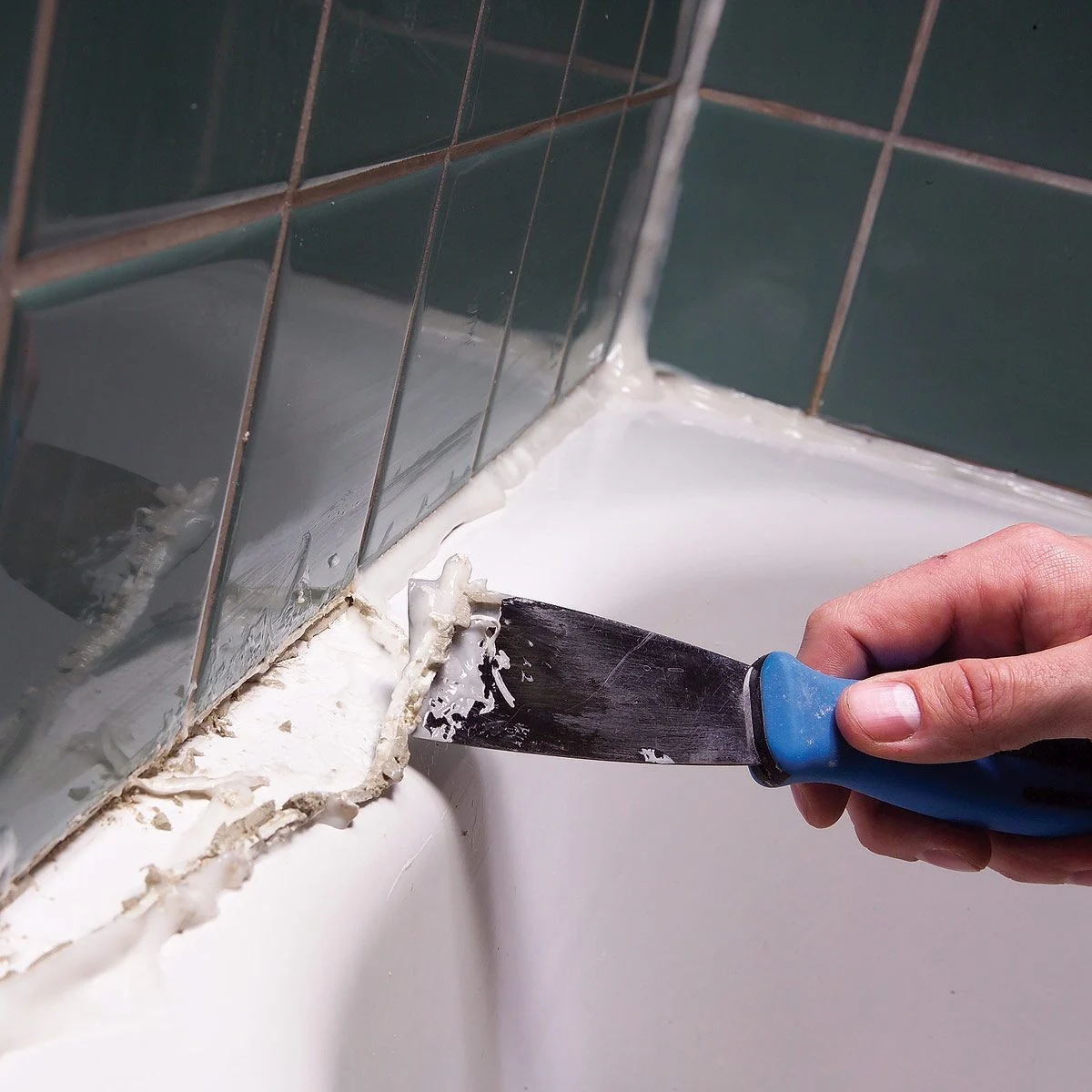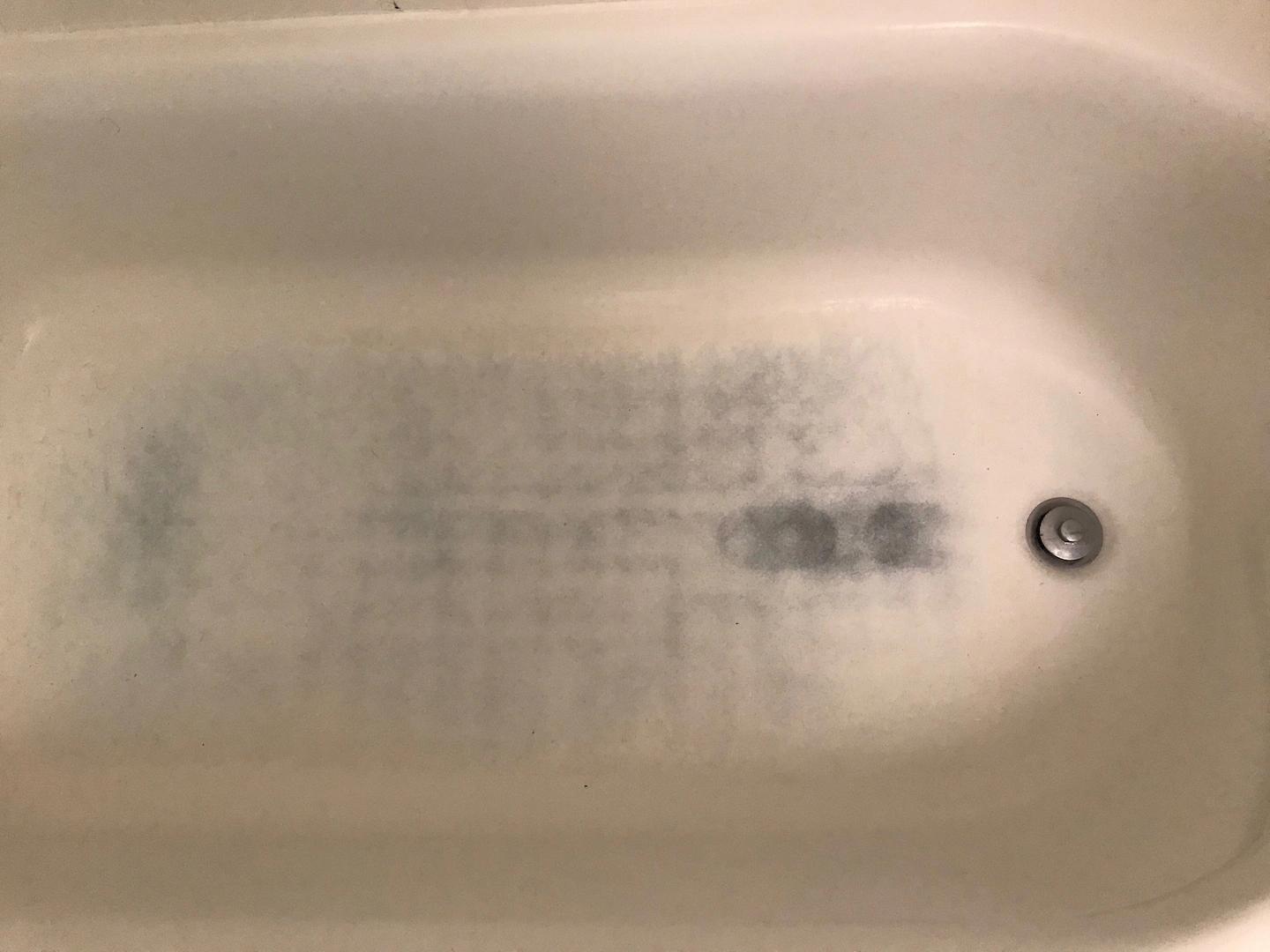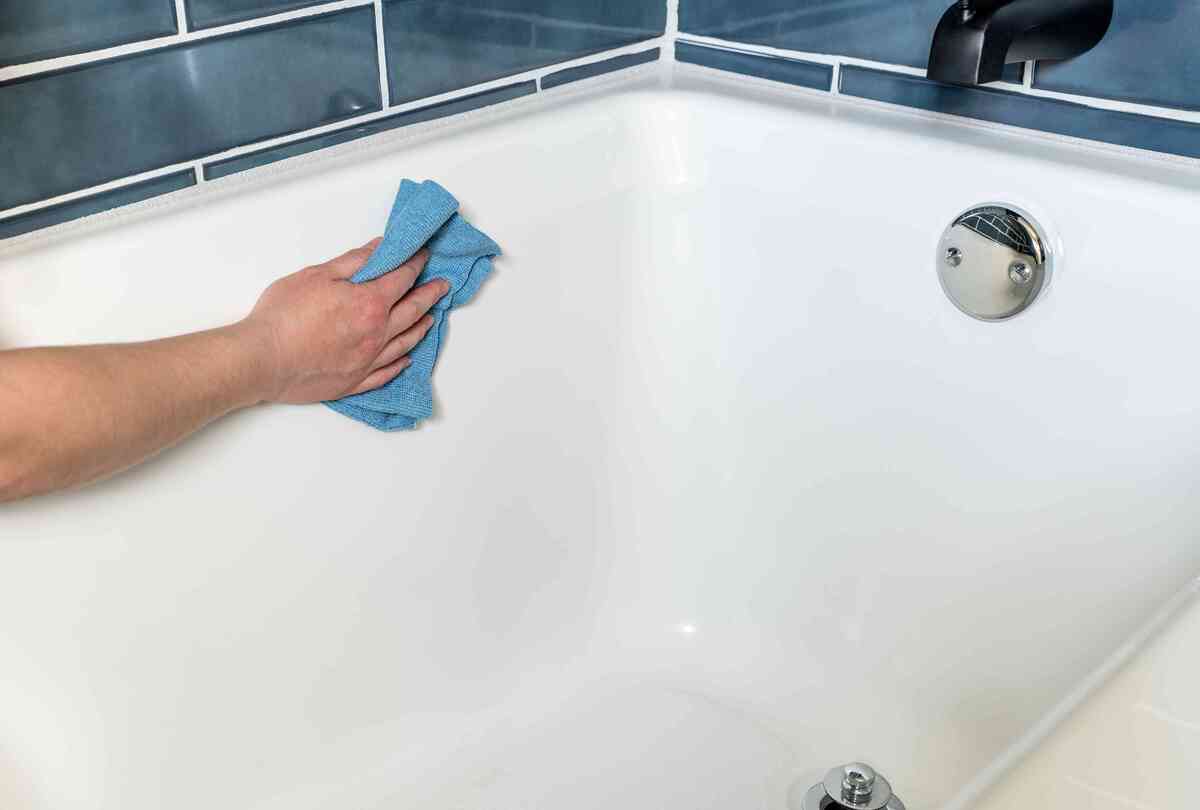Home>Furniture & Design>Bathroom Accessories>How To Remove Lime Deposits From A Bathtub


Bathroom Accessories
How To Remove Lime Deposits From A Bathtub
Modified: August 28, 2024
Learn effective ways to remove lime deposits from your bathtub and keep your bathroom accessories looking clean and fresh. Say goodbye to stubborn stains with these simple tips!
(Many of the links in this article redirect to a specific reviewed product. Your purchase of these products through affiliate links helps to generate commission for Storables.com, at no extra cost. Learn more)
Introduction
Lime deposits can be a persistent nuisance in any bathroom, especially in the bathtub. These unsightly white or grayish stains are caused by the buildup of minerals, primarily calcium and magnesium, found in hard water. Over time, these minerals accumulate on the surfaces of the bathtub, creating a crusty and unappealing layer that can be challenging to remove. However, fear not! There are various effective methods for tackling this issue, ranging from natural remedies to chemical solutions. In this comprehensive guide, we will explore the best techniques for removing lime deposits from your bathtub, ensuring that it regains its pristine appearance. Whether you prefer eco-friendly approaches or powerful commercial products, we've got you covered. So, let's dive into the world of lime deposit removal and reclaim the sparkle of your bathtub!
Key Takeaways:
- Say goodbye to lime deposits in your bathtub with natural remedies like vinegar, baking soda, and lemon juice. These eco-friendly solutions effectively dissolve mineral buildup, restoring your bathtub’s shine without harsh chemicals.
- For stubborn lime deposits, chemical cleaners like CLR and limescale remover gels offer targeted solutions. Prioritize safety and follow instructions carefully to effectively eliminate mineral buildup and enjoy a sparkling, limescale-free bathtub.
Read more: How To Remove Calcium Deposits From Glass
Understanding Lime Deposits
Lime deposits, also known as limescale or mineral deposits, are the result of minerals, primarily calcium and magnesium, present in hard water. When hard water is left to dry on surfaces such as the bathtub, these minerals remain behind, creating a stubborn and unsightly residue. The minerals in hard water accumulate over time, forming a crusty layer that can be challenging to remove.
The appearance of lime deposits can vary, but they are typically white or grayish in color and can give the bathtub a dull, unclean look. These deposits not only affect the aesthetic appeal of the bathtub but can also interfere with the functioning of fixtures and drains if left untreated.
It's important to note that lime deposits are not harmful to human health, but they can be a significant nuisance in maintaining a clean and visually appealing bathroom. Additionally, if left unaddressed, lime deposits can lead to more severe issues such as clogging and corrosion in plumbing fixtures.
Understanding the composition and formation of lime deposits is crucial in determining the most effective methods for their removal. Whether opting for natural remedies or chemical solutions, having a clear understanding of the nature of lime deposits will empower you to choose the best approach for restoring your bathtub to its pristine condition.
Natural Methods for Removing Lime Deposits
When it comes to tackling lime deposits in your bathtub, natural methods offer effective and eco-friendly solutions. These methods utilize common household ingredients and are gentle on both the bathtub surface and the environment. Here are some natural approaches to consider:
1. Vinegar Solution
Vinegar, particularly white vinegar, is a versatile and potent natural cleaner. Its acidic nature makes it highly effective in dissolving mineral deposits. To use vinegar for lime deposit removal, follow these steps:
- Mix equal parts of white vinegar and water in a spray bottle.
- Spray the solution generously onto the affected areas of the bathtub.
- Allow the solution to sit for at least 30 minutes to an hour to penetrate the lime deposits.
- Use a non-abrasive sponge or brush to scrub the area, then rinse thoroughly with water.
2. Baking Soda Paste
Baking soda is renowned for its gentle abrasive properties, making it an excellent natural scrubbing agent. When combined with vinegar, it creates a powerful fizzing reaction that can help break down and lift away lime deposits. Here's how to use a baking soda paste for lime deposit removal:
- Create a paste by mixing baking soda with a small amount of water or vinegar to form a thick, spreadable consistency.
- Apply the paste to the affected areas of the bathtub and let it sit for 15-30 minutes.
- Gently scrub the surface with a sponge or brush, focusing on the areas with the most significant lime deposits.
- Rinse the bathtub thoroughly to remove the paste and loosened deposits.
Read more: How To Remove Mineral Deposits From Glass
3. Lemon Juice
Lemon juice, with its natural acidity, is another effective natural remedy for combating lime deposits. The citric acid in lemon juice helps dissolve and loosen mineral buildup. To use lemon juice for lime deposit removal:
- Squeeze fresh lemon juice onto the affected areas of the bathtub.
- Allow the juice to sit for 15-30 minutes to penetrate the deposits.
- Use a sponge or brush to scrub the surface, then rinse thoroughly with water.
4. Steam Cleaning
Steam cleaning is a chemical-free method that can effectively loosen and remove lime deposits from the bathtub surface. Using a handheld steam cleaner, apply steam directly to the affected areas, allowing the heat and moisture to break down the mineral buildup. After steaming, wipe the surface with a clean cloth to remove the softened deposits.
These natural methods offer safe and environmentally friendly options for removing lime deposits from your bathtub, restoring its shine without the use of harsh chemicals. By incorporating these natural remedies into your cleaning routine, you can maintain a sparkling and limescale-free bathtub while minimizing the impact on the environment.
Chemical Methods for Removing Lime Deposits
When natural methods may not provide the desired results, chemical cleaners tailored for lime deposit removal can offer a more potent solution. These specialized products are formulated to effectively dissolve and eliminate stubborn mineral deposits, restoring the bathtub to its original luster. Here are some chemical methods and products commonly used for removing lime deposits:
1. Commercial Lime Scale Removers
Commercial lime scale removers are specifically designed to target and dissolve mineral deposits, including lime scale, rust, and soap scum. These products often contain powerful acids, such as hydrochloric acid or sulfamic acid, which effectively break down and dissolve the stubborn mineral buildup. When using commercial lime scale removers, it is essential to follow the manufacturer's instructions carefully and ensure proper ventilation in the bathroom.
2. CLR (Calcium, Lime, and Rust Remover)
CLR is a popular household cleaner designed to tackle tough calcium, lime, and rust stains. It contains a blend of powerful acids that work to dissolve and lift away mineral deposits from various surfaces, including bathtubs. To use CLR, apply the product to the affected areas, allow it to sit for the recommended time, and then scrub the surface before thoroughly rinsing the bathtub.
3. Acidic Toilet Bowl Cleaners
Certain acidic toilet bowl cleaners, containing hydrochloric acid or phosphoric acid, can also be effective in removing lime deposits from bathtubs. These cleaners are formulated to break down mineral buildup and can be applied to the affected areas, left to sit for a specified duration, and then scrubbed and rinsed thoroughly.
4. Limescale Remover Gels
Limescale remover gels are specifically designed to cling to vertical surfaces, making them ideal for treating lime deposits on bathtub walls and fixtures. These gels typically contain strong acids that effectively dissolve and remove mineral deposits, restoring the surface to its original shine.
When using chemical methods for removing lime deposits, it is crucial to prioritize safety by following the manufacturer's instructions, wearing protective gloves and ensuring adequate ventilation in the bathroom. Additionally, always test the product on a small, inconspicuous area of the bathtub to ensure compatibility and minimize the risk of damage.
Chemical methods for removing lime deposits offer a powerful and targeted approach to restoring the pristine condition of your bathtub. By selecting the appropriate chemical cleaner and following the recommended application guidelines, you can effectively eliminate stubborn mineral deposits and enjoy a sparkling, limescale-free bathtub.
Preventing Future Lime Deposits
Preventing future lime deposits in your bathtub is essential to maintain its pristine condition and minimize the need for frequent cleaning and descaling. By implementing proactive measures, you can effectively reduce the accumulation of mineral deposits and prolong the cleanliness and luster of your bathtub. Here are some preventive strategies to consider:
Read more: How To Remove Adhesive From A Bathtub
1. Regular Maintenance
Consistent and thorough cleaning of your bathtub is crucial in preventing the buildup of lime deposits. Establish a regular cleaning routine using mild, non-abrasive cleaners to remove any residual soap scum, oils, and mineral traces after each use. By promptly addressing water spots and minor mineral buildup, you can prevent them from evolving into stubborn lime deposits.
2. Squeegee After Use
After each use, consider using a squeegee to remove excess water from the bathtub surfaces. This simple practice helps minimize the drying of hard water and reduces the likelihood of mineral deposits forming. By eliminating standing water, you can significantly decrease the opportunity for lime deposits to accumulate.
3. Water Softening Systems
Installing a water softening system in your home can effectively reduce the mineral content in the water supply, thereby decreasing the formation of lime deposits. Water softeners work by replacing calcium and magnesium ions with sodium or potassium ions, resulting in softer water that is less likely to leave mineral residues on bathtub surfaces. Consult a professional to determine the most suitable water softening solution for your home.
4. Ventilation and Air Circulation
Proper ventilation in the bathroom is essential for reducing moisture and humidity, which can contribute to the formation of lime deposits. Ensure that your bathroom is well-ventilated during and after showers or baths to facilitate the evaporation of water and prevent the accumulation of mineral residues. Additionally, promoting air circulation by using exhaust fans or opening windows can aid in maintaining a drier environment.
Read more: How To Remove Grout From Bathtub
5. Protective Coatings
Consider applying a protective coating or sealant to the bathtub surface to create a barrier against mineral deposits. There are various bathtub sealants and coatings available that can help repel water and prevent minerals from adhering to the surface. Follow the manufacturer's instructions when applying these products to ensure proper adhesion and effectiveness.
By incorporating these preventive measures into your bathroom maintenance routine, you can effectively minimize the recurrence of lime deposits in your bathtub, preserving its cleanliness and visual appeal. Taking proactive steps to prevent mineral buildup will not only reduce the frequency of deep cleaning but also contribute to the long-term durability and beauty of your bathtub.
Conclusion
In conclusion, the battle against lime deposits in your bathtub can be effectively waged using a combination of natural and chemical methods, along with proactive preventive measures. Understanding the nature of lime deposits and their formation is crucial in selecting the most suitable approach for removal. Natural remedies such as vinegar solutions, baking soda pastes, lemon juice, and steam cleaning offer eco-friendly and gentle alternatives for combating mineral buildup. These methods not only effectively remove lime deposits but also contribute to a safer and more sustainable cleaning routine.
For more stubborn or extensive lime deposits, chemical cleaners tailored for lime deposit removal provide a potent solution. Commercial lime scale removers, CLR, acidic toilet bowl cleaners, and limescale remover gels offer targeted and effective means of dissolving and eliminating mineral deposits, restoring the bathtub to its original luster. When using chemical methods, prioritizing safety and following the manufacturer's instructions are paramount to achieving optimal results while safeguarding the bathtub's integrity.
Furthermore, preventing future lime deposits through regular maintenance, squeegeeing after use, water softening systems, ventilation, air circulation, and protective coatings is essential in prolonging the cleanliness and visual appeal of the bathtub. By implementing these preventive strategies, homeowners can significantly reduce the recurrence of mineral buildup, minimizing the need for frequent deep cleaning and descaling.
Ultimately, maintaining a sparkling and limescale-free bathtub not only enhances the aesthetic appeal of the bathroom but also contributes to the longevity and functionality of fixtures and surfaces. By incorporating a combination of natural and chemical methods for lime deposit removal and adopting proactive preventive measures, homeowners can enjoy a pristine and inviting bathtub environment.
In the quest for a gleaming bathtub, the synergy of effective cleaning methods and preventive strategies ensures that lime deposits are no match for the dedication to a clean and welcoming bathroom space. With the knowledge and tools at hand, homeowners can confidently reclaim the sparkle of their bathtubs and elevate the overall allure of their bathrooms.
Frequently Asked Questions about How To Remove Lime Deposits From A Bathtub
Was this page helpful?
At Storables.com, we guarantee accurate and reliable information. Our content, validated by Expert Board Contributors, is crafted following stringent Editorial Policies. We're committed to providing you with well-researched, expert-backed insights for all your informational needs.












0 thoughts on “How To Remove Lime Deposits From A Bathtub”